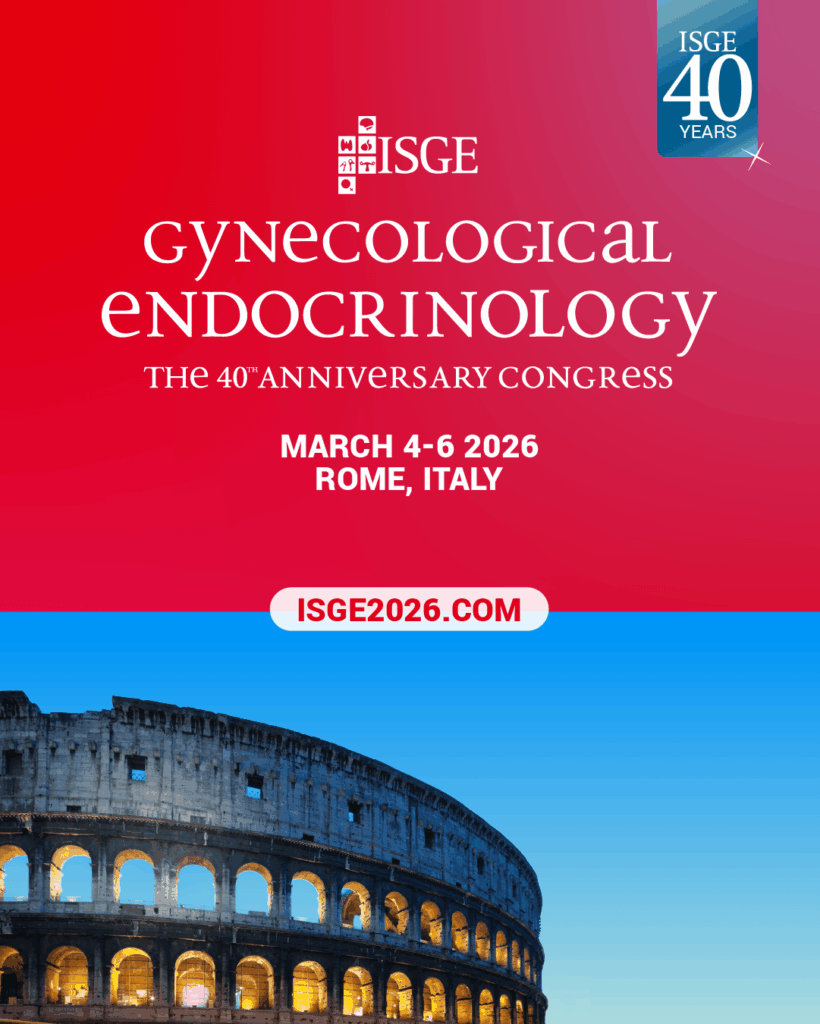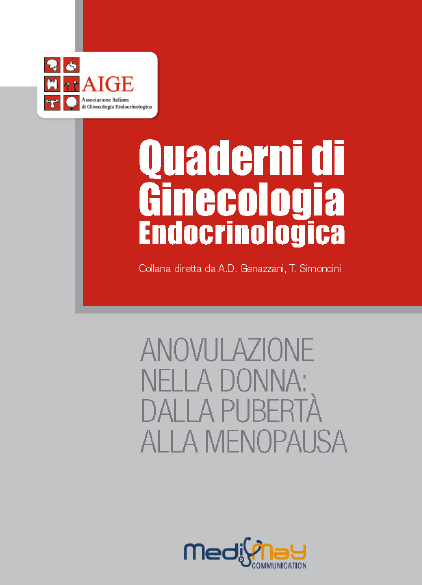-
Hasan Ali Inal, Zeynep Hafiza Ozturk Inal, Esra Tonguc, Turgut Var
Comparison of vaginal misoprostol and dinoprostone for cervical ripening before diagnostic hysteroscopy in nulliparous women
Fertil Steril_ 2015;103:1326–31Abstract
Objective: To compare the effectiveness of vaginal misoprostol and dinoprostone for cervical ripening before diagnostic hysteroscopy in nulliparous women.
Design: Placebo-controlled, double blind, randomized trial.
Setting: Teaching and research hospital.
Patient(s): Ninety women of reproductive age eligible for diagnostic hysteroscopy.
Intervention(s): Randomly assignment to receive 400 mg of misoprostol (n = 30) or 10 mg of dinoprostone (n ¼ 30) vaginally before diagnostic hysteroscopy, with a control group (n = 30) not receiving any cervical priming agent.
Main Outcome Measure(s): Primary outcome: the number of women requiring cervical dilatation; secondary outcomes: cervical width
before surgery, duration of dilatation time, ease of dilatation, complications during surgical procedure, and side effects of the drugs.
Result(s): In the placebo group, 23 patients required cervical dilatation compared with 17 in the misoprostol group and 9 in the dinoprostone
group. The mean (± standard deviation) cervical widths for the placebo, misoprostol, and dinoprostone groups were 4.23 ± 0.43 mm, 5.43 ± 0.5 mm, and 5.83 ± 0.64 mm, respectively. These widths were statistically significantly different. The duration of dilatation
was also statistically significantly longer in the control group.
Conclusion(s): Vaginally administered dinoprostone before diagnostic hysteroscopy is more effective than misoprostol for inducing cervical priming. Further studies are required to elucidate the most efficient option with the least side effects for cervical ripening -
Ingrid Sääv, Helena Kopp Kallner, Christian Fiala, Kristina Gemzell-Danielsson
Sublingual versus vaginal misoprostol for cervical dilatation 1 or 3 h prior to surgical abortion: a double-blinded RCT
Hum. Reprod. (2015) 30 (6): 1314-1322Abstract
STUDY QUESTION Can sublingual administration of misoprostol 1 h prior to vacuum aspiration be more effective than vaginal administration and as effective as either route three 3 h prior to surgery?
SUMMARY ANSWER Sublingually administered misoprostol is superior to vaginally administered misoprostol when given 1 h pre operatively, and it is as effective as after a three 3 h priming interval with either route of administration.
WHAT IS KNOWN ALREADY Misoprostol reduces complications and morbidity when used for cervical priming prior to surgical dilatation and vacuum aspiration in first trimester pregnancy. Despite the widespread use and extensive studies, the optimal route of administration of misoprostol before surgical abortion remains to be defined. The optimal priming interval after vaginal and sublingual administration of 400 mcg misoprostol has been reported to be 3 h. A longer interval will not improve dilatation but will increase the risk for bleeding and expulsion of the uterine contents before surgical evacuation. The pharmacokinetic properties of misoprostol indicate that sublingual compared with vaginal administration of misoprostol may result in a more rapid cervical priming effect.
STUDY DESIGN, SIZE, DURATION Women were randomized to four treatment groups and received 400 mcg misoprostol sublingually, or vaginally, 1 or 3 h prior to surgery. The study was a double-blinded RCT with regard to route of misoprostol administration but not the timing interval. The primary outcome was baseline cervical dilatation after misoprostol priming. The study was conducted between June 2007 and March 2014 and 184 women aged 18 years or older were recruited.
PARTICIPANTS/MATERIALS, SETTING, METHODS Women were recruited among nulliparous women undergoing elective surgical first trimester abortion. Exclusion criteria were any contraindication for misoprostol, untreated genital infection, previous history of surgery to the cervix, or abnormal pregnancy. Gestational age was established by endovaginal ultrasound examination. The trial was conducted in a university hospital outpatient clinic. The allocated medication (misoprostol and placebo) was self-administered 1 h or 3 h prior to surgery. All women received 2 tablets of 200 mcg misoprostol and 2 identical looking placebo tablets. Prophylactic pain medication, 100 mg oral diclofenac, was administered at the time of misoprostol. Side effects were recorded immediately before surgery and women were asked which administration route of administration they found most convenient and which they would have preferred. The exact priming time (from misoprostol administration to initiation of dilatation) and signs of bleeding prior to dilatation were recorded. Vacuum aspiration was performed under general anaesthesia according to clinical routine. Dilatation was performed using tapered Pratt-dilatators and the resistance of the cervix was assessed objectively using a tonometer. All surgery was performed by two investigators, experienced in using the tonometer. The cumulative force required to dilate the cervix was calculated by adding the peak force needed for each dilatator up to 9.7 mm. The time needed for surgery including cervical dilatation and vacuum aspiration, was recorded. Intra-operative blood loss was measured and any surgical complications noted.
MAIN RESULTS AND THE ROLE OF CHANCE Six women were excluded retrospectively from the analysis. Multivariate analysis of the primary outcome baseline dilatation showed a significant influence on route of administration (P = 0.034, 95% confidence interval (CI) −2.202, −0.086) as well as the interaction variable between route of administration and total priming time (P = 0.042, 95% CI 0.00, 0.016), with the vaginal route becoming more effective with longer priming time. These factors also had a significant influence on the peak force (administration route P = 0.042, 95% CI 0.221, 12.427, interaction P = 0.049, 95% CI −0.089, 0.000) and cumulative force (administration route P = 0.023, 95% CI 3.142, 40.877, interaction P = 0.026, 95% CI −0.293, −0.019) used for dilatation. The total priming time had a significant influence on bleeding before surgery, with more women bleeding the longer the total priming time (P = 0.003, 95% CI 2.203, 49.706). For abdominal pain before surgery there was a significant influence of administration route (P = < 0.001 95% CI 0.028, 0.235) and the interaction variable between administration route and priming time (P = 0.003, 95% CI 2.005, 30.757) with more women in the sublingual group experiencing abdominal pain the longer the priming time. The groups did not differ regarding duration of surgery, amount of bleeding and rate of side effects, such as nausea and shivering. Women in our study preferred vaginal treatment, as they disliked the taste of the misoprostol tablets. Vaginal treatment was also perceived as quicker to administer (P = 0.0001). LIMITATIONS, REASONS FOR CAUTION The cervical tissue has viscoelastic properties, i.e. tissue resistance to mechanical dilatation depends also on the rate at which dilatation is performed. The ideal measurement of dilatation force should therefore also record the rate and time of dilatation. To ensure comparability, only nulliparous women without prior cervical surgery were recruited. In addition, time of dilatation was recorded and did not differ between the groups, and it is therefore assumed that dilatation took place at approximately the same rate. A limitation is that the study was conducted over a long time period because there was only one tonometer, decreasing numbers of surgical abortions and the fact that the main author was on a rotation schedule. In addition, the study was not powered to detect differences in side effects.
WIDER IMPLICATIONS OF FINDINGS Priming with misoprostol is recommended prior to surgical abortion. The priming interval of misoprostol may be reduced to 1 h after sublingual administration but not after vaginal administration. The results of the present study will increase choice and flexibility in cervical priming. -
Susan Sam, Bert Scoccia, Sudha Yalamanchi, Theodore Mazzone
Metabolic dysfunction in obese Hispanic women with polycystic ovary syndrome
Hum. Reprod. (2015) 30 (6): 1358-1364Abstract
STUDY QUESTION Are certain ethnic groups with polycystic ovary syndrome (PCOS) at increased risk of metabolic disorders?
SUMMARY ANSWER Obese Hispanic women with PCOS are at increased risk of metabolic disorders compared with age- and BMI-matched obese non-Hispanic white women with PCOS in the USA.
WHAT IS KNOWN ALREADY Ethnic differences in body composition and metabolic risk are well established. PCOS is a common disorder in women of reproductive age and is associated with high rates of insulin resistance, glucose intolerance and dyslipidemia.
STUDY DESIGN, SIZE, DURATION A cross-sectional observational study was performed at an Academic Medical Center on 60 women of reproductive age with PCOS.
PARTICIPANTS/MATERIALS, SETTING, METHODS Blood was obtained after fasting from 17 Hispanic, 22 non-Hispanic black and 21 non-Hispanic white women with PCOS who were similar in age and BMI. Anthropometric parameters, insulin, lipid and lipoprotein levels (measured by nuclear magnetic resonance) were compared between the three groups.
MAIN RESULTS AND THE ROLE OF CHANCE Age and BMI did not differ between the groups. Hispanic women with PCOS had higher waist-to-hip ratio (WHR) (P = 0.02), homeostasis model assessment of insulin resistance (HOMA-IR) (P = 0.03) and a more atherogenic lipid and lipoprotein profile consisting of lower high-density lipoprotein (HDL) (P = 0.02), higher low-density lipoprotein (LDL) particle number (P = 0.02), higher very low-density lipoprotein particle (VLDL) size (P = 0.03) and lower LDL (P = 0.03) and HDL particle size (P = 0.005) compared with non-Hispanic white women. The differences in HDL, HOMA-IR, VLDL and LDL size did not persist after adjustment for WHR while differences in LDL particle number (P = 0.04) and HDL size (P = 0.01) persisted.
LIMITATIONS, REASON FOR CAUTION The sample size for the three groups was small but the findings were still significant. The women were mostly obese so the ethnic differences in metabolic disorders may not apply to non-obese women with PCOS.
WIDER IMPLICATIONS OF THE FINDINGS Independent of BMI, obese, reproductive age, Hispanic women with PCOS in the USA had a greater degree of abdominal obesity, insulin resistance and dyslipidemia. Hispanic women with PCOS may benefit from more focused management of metabolic parameters. -
G. Thiagamoorthy, S. Srikrishna, L. Cardozo
Sexual function after urinary incontinence surgery (download)
Maturitas 81 (2015) 243–247Abstract
Urinary incontinence (UI) affects between 42 and 71% of women. Sexual dysfunction is prevalent in the general population, but in women with UI, the prevalence is greater (42–56%). This review assesses the effects of urinary continence surgery on the sexual function of women with UI. Stress UI is surgically mostly managed via Burch colposuspension or a mid-urethral sling. These oper-ations are as effective as each other with regards to maintaining or improving in sexual function. One of the main risks of these operations are that urgency UI (UUI) may be exacerbated or arise de novo and this has been shown to decrease sexual function. Severe refractory UUI requires complex surgery, such as percutaneous sacral nerve stimulation (SNS) then augmentation cystoplasty or urinary diversion. SNS may improve sexual function by direct action on the pudendal nerve as well as improving incontinence. Urinary diversion and augmentation cystoplasty are procedures of last resort in women who are refractory to all other UUI treatments. The majority of women report no change or improvement in sexual function as the urinary diversion negates the requirement for incontinence pads and indwelling catheters. Deteriorated sexual function has also been described in up to 37.5%. Thirty percent of women undergoing urinary diversion would have liked more ‘sexological’ counselling. Conclusion: The majority of women enjoy maintained or improved sexual function after surgical treatment of UI. It is important to ensure women have appropriate pre-operative assessment and counselling so they may be advised of the risks of failed surgery including deteriorated sexual function.
-
Myung-Jin Mun, Tae-Hee Kim, Ji-Young Hwang, Won-Cheoul Jang
Vitamin D receptor gene polymorphisms and the risk for female reproductive cancers: A meta-analysis
(download)
Maturitas 81 (2015) 256–265Abstract
Vitamin D receptor (VDR) gene polymorphisms and the risks for various breast and ovarian cancers have been reported in many epidemiological studies. However, the associations between VDR gene polymor-phisms and the risk for each type of cancer are unclear. The aim of this meta-analysis was to evaluate the associations between VDR gene polymorphisms and female reproductive cancers. A systematic review was performed with the PubMed Science Direct, Scopus, and Google Scholar databases up to April 2014 using the search terms “vitamin D receptor or VDR” and “variant or polymorphism or SNP” with terms for breast, ovarian, cervical, endometrial, uterine, and vaginal cancers. A meta-analysis with the pooled odds ratios and 95% confidence intervals was carried out to assess the associations between VDR polymor-phisms (Cdx-2, FokI, BsmI, ApaI, and TaqI) and the risks for reproductive cancers under the heterozygous, homozygous, dominant, and recessive models with fixed or random effects models. Six ovarian cancer studies (13 individual studies involving 4107 cases and 6661 controls) and 29 breast cancer studies (38 individual studies involving 16,453 cases and 22,044 controls) were included in our meta-analysis. Our results indicate that the FokI polymorphism was related to increased risks for breast and ovarian can-cers, whereas the BsmI polymorphism was associated with a decreased risk for developing these cancers. Our comprehensive meta-analysis indicated that the FokI and BsmI VDR gene polymorphisms may be significantly associated with gynecological cancers. We suggest monitoring VDR gene polymorphisms as potential biomarkers in patients with gynecological malignancy.
-
Meg Ritchie, Bu B. Yeap
Thyroid hormone: Influences on mood and cognition in adults (download)
Maturitas 81 (2015) 266–275Abstract
The association of thyroid dysfunction with alterations in mood and cognition has been recognised since some of the earliest descriptions of thyroid disease. Over the years, researchers have aimed to further define these effects throughout the spectrum of thyroid disorders, to better understand the underlying condition and refine indications for treatment. More recently, attention has turned towards examining the impact of differences in thyroid hormones within the normal reference range, particularly in older adults, providing new insights into the association of thyroid hormone with cognitive decline. This review summarises the evidence assessing the influence of thyroid hormone on mood and cognition in overt and subclinical hypothyroidism, within the reference range, and in subclinical and overt hyperthyroidism. Treatment of overt thyroid dysfunction largely resolves associated disturbances in mood and cognitive dysfunction, however in the setting of overt hypothyroidism subtle detrimental effects on cognition may not be fully reversed. Subclinical hyperthyroidism and higher free thyroxine (FT4) within the normal range have been associated with poorer cognitive outcomes. Future research including randomised controlled trials are required to confirm causality and guide the assessment of benefits vs risks of intervention in the increasing population of older adults with subclinical thyroid disease.
-
Erika Borkoles, Nick Reynolds, David R. Thompson, Chantal F. Ski, Lily Stojanovska, Remco C.J. Polman
The role of depressive symptomatology in peri- and post-menopause
(download)
Maturitas 81 (2015) 306–310Abstract
Objectives: There is evidence that menopausal symptoms manifested at peri-menopause occur less fre-quently when compared to the symptoms experienced at post-menopause. The aim of this study wasto investigate this and to test the hypothesis that depressive symptomatology mediates the relationshipbetween menopausal stage and symptom frequency.Methods: This cross-sectional study included 213 women (M age = 52 years), of whom 125 were peri-and 88 post-menopausal. Measures comprised the Center for Epidemiologic Studies-Depression scale(CES-D) and the Women’s Health Questionnaire (WHQ) vasomotor symptoms and somatic symptomssubscales.Results: Multiple mediated regression analyses provided evidence that somatic symptoms and vasomotorsymptoms were less frequent at post- compared to peri-menopause, and that these differences weremediated by depressive symptomatology. Multivariate effect sizes ranged from small to moderate, andunivariate effect sizes were uniformly small with wide confidence intervals.Conclusions: The frequency of vasomotor and somatic symptoms appears to increase with depressedaffect. The management of symptoms could include interventions of a psychotherapeutic nature, whichmay offset this effect, particularly in women for whom depressive symptoms are a feature of the climac-teric syndrome. The extent to which depression and the climacteric syndrome may be causally related toone another remains unclear and longitudinal research should further examine the mechanisms of thisassociation.
-
Stefano Palomba
Aromatase Inhibitors for Ovulation Induction
J Clin Endocrinol Metab 100: 1742–1747, 2015Abstract
Normogonadotropic anovulation, including polycystic ovary syndrome (PCOS), is one of the main causes of infertility. Recent meta-analysis and randomized controlled trial suggest the use of aromatase inhibitors (ie, letrozole) as effective drug and first-line treatment to restore fertility in these patients. The current manuscript will give a critical, provocative, and personal point of view on the topic.
-
Devjit Tripathy, Jeff E. Cobb, Walter Gall, Klaus-Peter Adam, Tabitha George, Dawn C. Schwenke, MaryAnn Banerji, George A. Bray, Thomas A. Buchanan, Stephen C. Clement, Robert R. Henry, Abbas E. Kitabchi, Sunder Mudaliar, Robert E. Ratner, Frankie B. Stentz, Peter D. Reaven, Nicolas Musi, Ele Ferrannini, Ralph A. DeFronzo
A Novel Insulin Resistance Index to Monitor Changes in Insulin Sensitivity and Glucose Tolerance: the ACT NOW Study
J Clin Endocrinol Metab 100: 1855–1862, 2015 (download)Abstract
Objective: The objective was to test the clinical utility of QuantoseM to monitor changes in insulin sensitivity after pioglitazone therapy in prediabetic subjects. QuantoseM is derived from fasting measurements of insulin, α-hydroxybutyrate, linoleoyl-glycerophosphocholine, and oleate, three nonglucose metabolites shown to correlate with insulin-stimulated glucose disposal.
Research Design and Methods: Participants were 428 of the total of 602 ACT NOW impaired
glucose tolerance (IGT) subjects randomized to pioglitazone (45 mg/d) or placebo and followed for 2.4 years. At baseline and study end, fasting plasma metabolites required for determination of Quantose, glycated hemoglobin, and oral glucose tolerance test with frequent plasma insulin and glucose measurements to calculate the Matsuda index of insulin sensitivity were obtained.
Results: Pioglitazone treatment lowered IGT conversion to diabetes (hazard ratio _ 0.25; 95%
confidence interval _ 0.13–0.50; P < .0001). Although glycated hemoglobin did not track with insulin sensitivity, Quantose MQ increased in pioglitazone-treated subjects (by 1.45 [3.45] mg*min-1*kgwbm _1) (median [interquartile range]) (P < .001 vs placebo), as did the Matsuda index (by 3.05 [4.77] units; P < .0001). Quantose M correlated with the Matsuda index at baseline and change in the Matsuda index from baseline (rho, 0.85 and 0.79, respectively; P < .0001) and was progressively higher across closeout glucose tolerance status (diabetes, IGT, normal glucose tolerance). In logistic models including only anthropometric and fasting measurements, QuantoseM outperformed both Matsuda and fasting insulin in predicting incident diabetes. Conclusions: In IGT subjects, Quantose MQ parallels changes in insulin sensitivity and glucose tolerance with pioglitazone therapy. Due to its strong correlation with improved insulin sensitivity and its ease of use, QuantoseMQ may serve as a useful clinical test to identify and monitor therapy in insulin-resistant patients. -
Yuan-Hua Chen, Lin Fu, Jia-Hu Hao, Zhen Yu, Peng Zhu, Hua Wang, Yuan-Yuan Xu, Cheng Zhang, Fang-Biao Tao, and De-Xiang Xu
Maternal Vitamin D Deficiency During Pregnancy Elevates the Risks of Small for Gestational Age and Low Birth Weight Infants in Chinese Population
J Clin Endocrinol Metab 100: 1912–1919, 2015Abstract
Context: Vitamin D deficiency is common in pregnant women. Nevertheless, the association between maternal vitamin status during pregnancy and the risk of having small for gestational age (SGA) and low birth weight (LBW) infants is uncertain.
Objective: The objective of this study was to investigate whether there is a correlation between maternal vitamin D deficiency during pregnancy and the risk of having SGA and LBW infants in a Chinese population.
Design and Participants: This was a population-based birth cohort study that recruited 3658 eligible mother-and-singleton-offspring pairs.
Main Outcome Measures: Serum 25-hydroxyvitamin D was measured by RIA. The rate and relative risk (RR) for SGA and LBW infants were calculated among subjects with vitamin D deficiency and insufficiency during pregnancy.
Results: There was a positive correlation between maternal serum 25-hydroxyvitamin D level and offspring birth weight (r = 0.477; P < .001). Further analysis showed that 4.98% of neonates were LBW infants among the subjects with vitamin D deficiency (RR, 12.00; 95% confidence interval [CI], 4.37, 33.00) and 1.32% among the subjects with vitamin D insufficiency (RR, 3.18; 95% CI, 1.07, 9.48). After adjustment for confounders, the RR for LBW infants was 12.31 (95% CI, 4.47, 33.89)amongsubjects with vitaminDdeficiency and 3.1 (95% CI, 1.06, 9.39)amongsubjects with vitamin D insufficiency. Moreover, 16.01% of neonates were SGA infants among subjects with vitamin D deficiency (RR, 5.72;95%CI, 3.80, 8.59) and 5.59% among subjects with vitaminDinsufficiency (RR, 1.99; 95% CI, 1.27, 3.13). After adjustment for confounders, the RR for SGA infants was 6.47 (95% CI, 4.30, 9.75) amongsubjects with vitaminDdeficiencyand2.01(95%CI, 1.28, 3.16)amongsubjects with vitamin D insufficiency. Conclusion: Maternal vitamin D deficiency during pregnancy elevates the risk of SGA and LBW
infants in a Chinese population. -
Jane A. Cauley, Gail A. Greendale, Kristine Ruppert, Yinjuan Lian, John F. Randolph, Jr, Joan C. Lo, Sherri-Ann Burnett-Bowie, Joel S. Finkelstein
Serum 25 Hydroxyvitamin D, Bone Mineral Density and Fracture Risk Across the Menopause
J Clin Endocrinol Metab 100: 2046–2054, 2015Abstract
Context: Low levels of serum 25 Hydroxyvitamin D [25(OH)D] have been linked to greater fracture risk in older women.
Objective: This study aimed to determine whether higher 25(OH)D is associated with slower loss of bone mineral density (BMD) and lower fracture risk during the menopausal transition.
Design, Setting, and Participants: This was a prospective cohort study at five clinical centers in the United States. Mean age was 48.5 ± 2.7 years. The fracture analysis included 124 women with an incident traumatic fracture, 88 with incident nontraumatic fracture, and 1532 women without incident fractures; average followup was 9.5 years. BMD analysis included 922 women with a documented final menstrual period.
Main Outcome Measures: Serum 25(OH)D was measured by liquid chromatography tandem mass spectrometry at the third annual clinic visit. BMD was measured and incident fractures ascertained at each annual visit.
Results: The mean 25(OH)D was 21.8 ng/mL; seven-hundred two (43%) of thewomenhad 25(OH)D values_20 ng/mL. There was no significant association between 25(OH)D and traumatic fractures. In multivariate adjusted hazards models, the hazard ratio (HR) for nontraumatic fractures (95% confidence interval [CI]) was 0.72 (0.54–0.96) for each 10-ng/mL increase in 25(OH)D. Comparing women whose 25(OH)D was >20 vs < 20 ng/mL, the HR (95% CI) for fracture was 0.54 (0.32– 0.89). Changes in lumbar spine and femoral neck bone mineral density across menopause were not significantly associated with serum 25(OH)D level.
Conclusion: Serum 25(OH)D levels are inversely associated with nontraumatic fracture in mid-life women. Vitamin D supplementation is warranted in midlife women with 25(OH)D levels < 20 ng/mL
Abstract selezionati
-
Hasan Ali Inal, Zeynep Hafiza Ozturk Inal, Esra Tonguc, Turgut Var
Comparison of vaginal misoprostol and dinoprostone for cervical ripening before diagnostic hysteroscopy in nulliparous women
Fertil Steril_ 2015;103:1326–31 -
Ingrid Sääv, Helena Kopp Kallner, Christian Fiala, Kristina Gemzell-Danielsson
Sublingual versus vaginal misoprostol for cervical dilatation 1 or 3 h prior to surgical abortion: a double-blinded RCT
Hum. Reprod. (2015) 30 (6): 1314-1322 -
Susan Sam, Bert Scoccia, Sudha Yalamanchi, Theodore Mazzone
Metabolic dysfunction in obese Hispanic women with polycystic ovary syndrome
Hum. Reprod. (2015) 30 (6): 1358-1364 -
G. Thiagamoorthy, S. Srikrishna, L. Cardozo
Sexual function after urinary incontinence surgery (download)
Maturitas 81 (2015) 243–247 -
Myung-Jin Mun, Tae-Hee Kim, Ji-Young Hwang, Won-Cheoul Jang
Vitamin D receptor gene polymorphisms and the risk for female reproductive cancers: A meta-analysis
(download)
Maturitas 81 (2015) 256–265 -
Meg Ritchie, Bu B. Yeap
Thyroid hormone: Influences on mood and cognition in adults (download)
Maturitas 81 (2015) 266–275 -
Erika Borkoles, Nick Reynolds, David R. Thompson, Chantal F. Ski, Lily Stojanovska, Remco C.J. Polman
The role of depressive symptomatology in peri- and post-menopause
(download)
Maturitas 81 (2015) 306–310 -
Stefano Palomba
Aromatase Inhibitors for Ovulation Induction
J Clin Endocrinol Metab 100: 1742–1747, 2015 -
Devjit Tripathy, Jeff E. Cobb, Walter Gall, Klaus-Peter Adam, Tabitha George, Dawn C. Schwenke, MaryAnn Banerji, George A. Bray, Thomas A. Buchanan, Stephen C. Clement, Robert R. Henry, Abbas E. Kitabchi, Sunder Mudaliar, Robert E. Ratner, Frankie B. Stentz, Peter D. Reaven, Nicolas Musi, Ele Ferrannini, Ralph A. DeFronzo
A Novel Insulin Resistance Index to Monitor Changes in Insulin Sensitivity and Glucose Tolerance: the ACT NOW Study
J Clin Endocrinol Metab 100: 1855–1862, 2015 (download) -
Yuan-Hua Chen, Lin Fu, Jia-Hu Hao, Zhen Yu, Peng Zhu, Hua Wang, Yuan-Yuan Xu, Cheng Zhang, Fang-Biao Tao, and De-Xiang Xu
Maternal Vitamin D Deficiency During Pregnancy Elevates the Risks of Small for Gestational Age and Low Birth Weight Infants in Chinese Population
J Clin Endocrinol Metab 100: 1912–1919, 2015 -
Jane A. Cauley, Gail A. Greendale, Kristine Ruppert, Yinjuan Lian, John F. Randolph, Jr, Joan C. Lo, Sherri-Ann Burnett-Bowie, Joel S. Finkelstein
Serum 25 Hydroxyvitamin D, Bone Mineral Density and Fracture Risk Across the Menopause
J Clin Endocrinol Metab 100: 2046–2054, 2015






